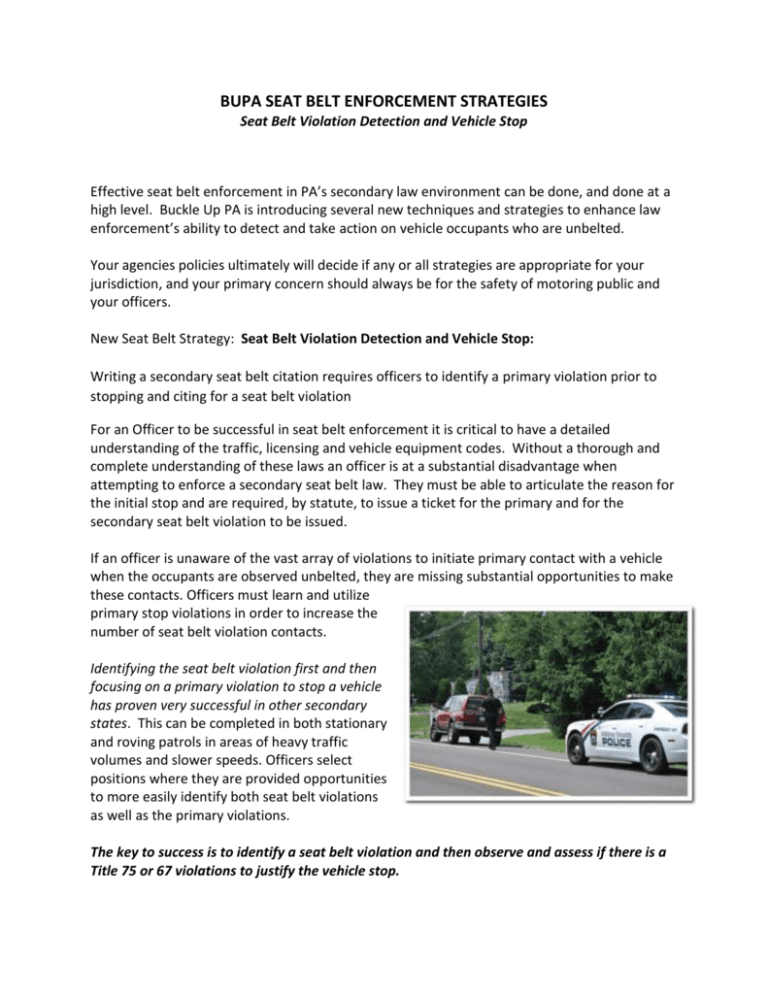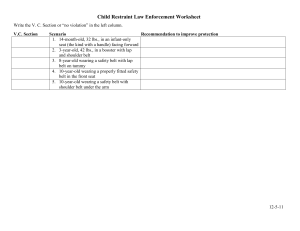SOP SeatBelt Violation-Detection & Vehicle Stop
advertisement

BUPA SEAT BELT ENFORCEMENT STRATEGIES Seat Belt Violation Detection and Vehicle Stop Effective seat belt enforcement in PA’s secondary law environment can be done, and done at a high level. Buckle Up PA is introducing several new techniques and strategies to enhance law enforcement’s ability to detect and take action on vehicle occupants who are unbelted. Your agencies policies ultimately will decide if any or all strategies are appropriate for your jurisdiction, and your primary concern should always be for the safety of motoring public and your officers. New Seat Belt Strategy: Seat Belt Violation Detection and Vehicle Stop: Writing a secondary seat belt citation requires officers to identify a primary violation prior to stopping and citing for a seat belt violation For an Officer to be successful in seat belt enforcement it is critical to have a detailed understanding of the traffic, licensing and vehicle equipment codes. Without a thorough and complete understanding of these laws an officer is at a substantial disadvantage when attempting to enforce a secondary seat belt law. They must be able to articulate the reason for the initial stop and are required, by statute, to issue a ticket for the primary and for the secondary seat belt violation to be issued. If an officer is unaware of the vast array of violations to initiate primary contact with a vehicle when the occupants are observed unbelted, they are missing substantial opportunities to make these contacts. Officers must learn and utilize primary stop violations in order to increase the number of seat belt violation contacts. Identifying the seat belt violation first and then focusing on a primary violation to stop a vehicle has proven very successful in other secondary states. This can be completed in both stationary and roving patrols in areas of heavy traffic volumes and slower speeds. Officers select positions where they are provided opportunities to more easily identify both seat belt violations as well as the primary violations. The key to success is to identify a seat belt violation and then observe and assess if there is a Title 75 or 67 violations to justify the vehicle stop.







